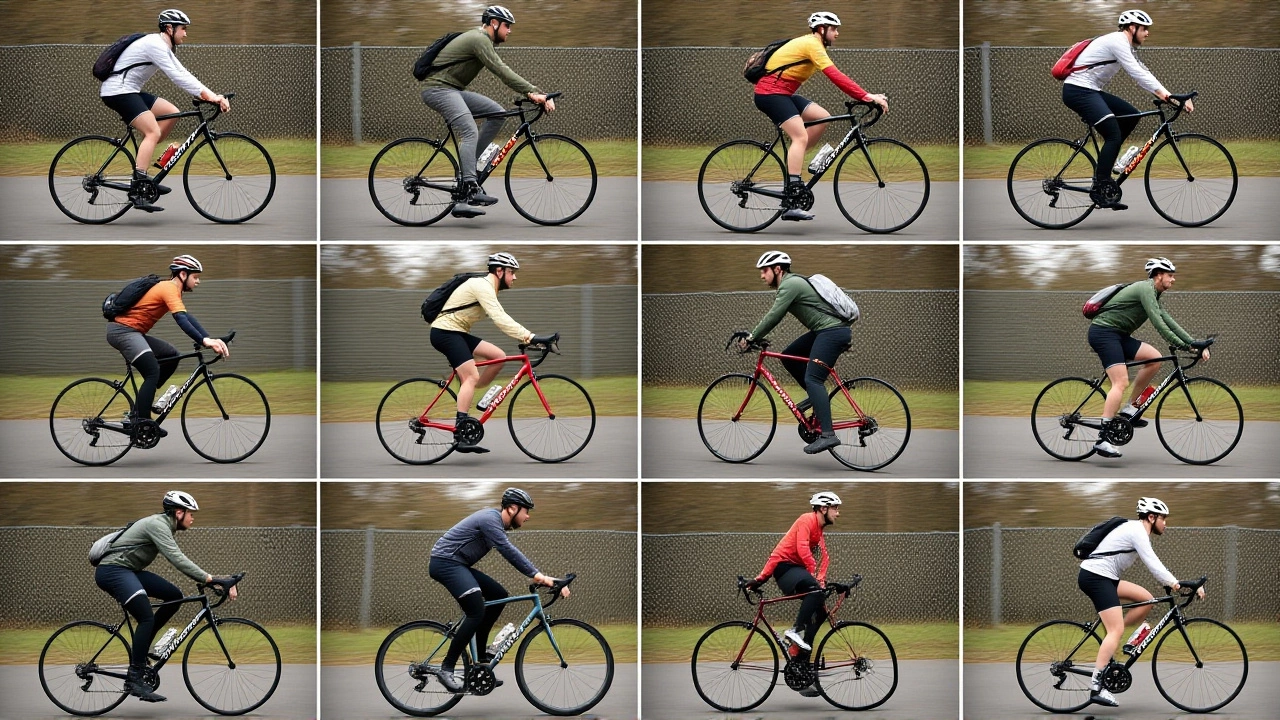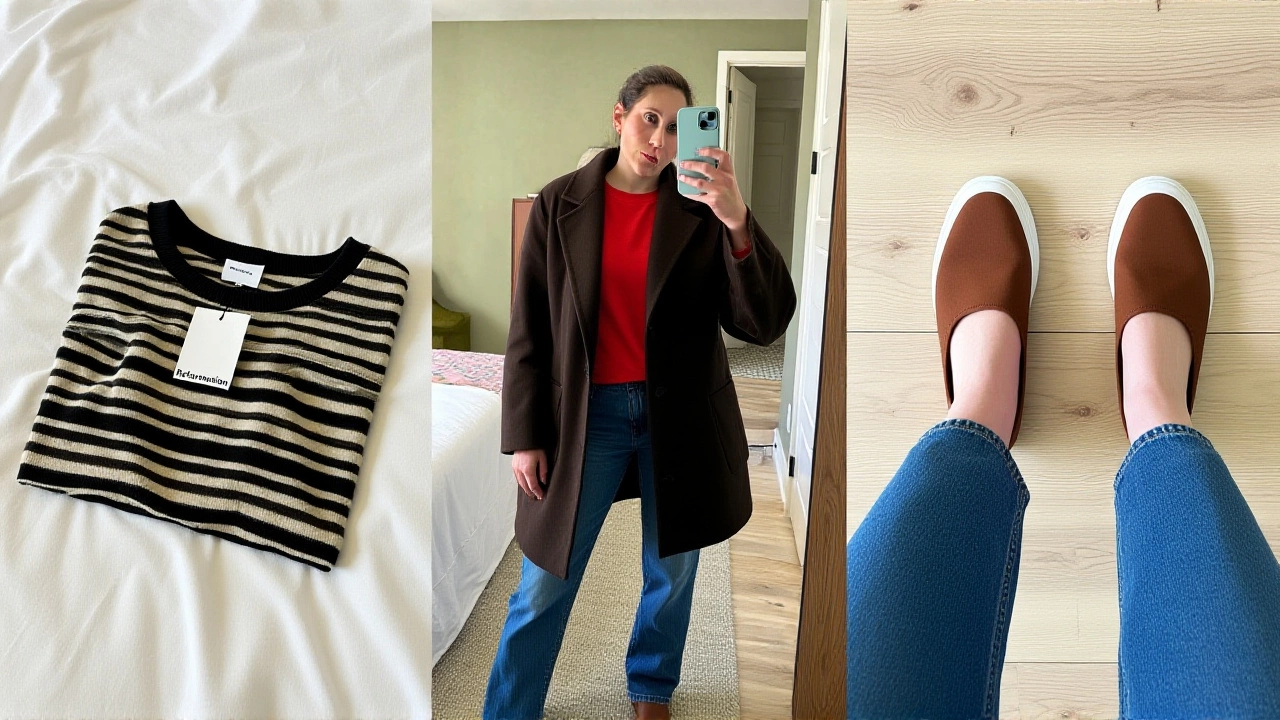Between November 1 and November 20, 2025, Who What Wear, Inc. quietly launched one of its most strategically placed editorial features of the year: "For Your Consideration: 17 Mini Reviews of Some of My Favorite Things Right Now." It wasn’t a splashy product drop or a celebrity collab. No flashy video. Just 17 tight, punchy reviews—spanning from Zara leggings to Alaïa coats—that popped up across eight different trend articles on the site, each time framed as a must-read before the holiday rush. And it worked. Readers clicked. Shares spiked. Sales trackers from partner retailers showed early spikes in search volume for the exact items mentioned.
Who’s Really Writing These Reviews?
Here’s the twist: no single author owns the piece. In four articles—including the deep dive on Zara’s winter collaboration with Ludovic de Saint Sernin—the mini reviews are credited to Allyson Payer, listed simply as a "Who What Wear editor." But in four others, including the guide to secondhand leather bombers and winter color combos, the byline reads only "Anna," with the title "senior fashion editor." Industry insiders know that’s Anna Laub, a veteran who’s shaped the brand’s voice since 2019. The inconsistency isn’t a mistake—it’s intentional. Who What Wear is testing whether readers care more about the content than the byline. And so far, the data says no.The feature doesn’t name specific products. No model numbers. No prices. Just phrases like "From leggings to lip gloss" and "From Zara to Alaïa." That vagueness is the point. It’s not meant to be a shopping list. It’s a mood board in text form. A whisper in your ear: "This is what the insiders are wearing." And because it’s scattered across trend pieces on French fashion, winter palettes, and sustainable shopping, it feels less like an ad and more like insider gossip you stumbled on by accident.
How It’s Being Used Across the Site
The real genius? The feature didn’t get its own page. It lives inside other articles—like a hidden Easter egg. In "The Very Best Winter Coats of 2025," it appears right after a breakdown of wool blends and collar styles. In the piece on Massimo Dutti summer picks, it’s tucked beneath a section on linen trousers. Even the article on "Chic Winter Color Combinations" ends with it, right before the promo code section. That’s not accidental. It’s behavioral targeting. If you’re reading about color theory, you’re likely in gift-buying mode. If you’re scrolling through bomber jackets, you’re probably hunting for something durable—and maybe a little edgy.And then there’s Benderici.com, the beauty blog that cross-referenced the mini reviews alongside its "2025 Gift Guide: Feel Perfectly Pampered with These Disney Beauty" picks. That’s the signal: this isn’t just fashion. It’s gifting. The feature became a bridge between clothing and cosmetics, between luxury and accessibility. Suddenly, it wasn’t just about what to wear—it was about what to give.

Why This Matters for Holiday Shopping
Black Friday 2025 lands on November 28. Cyber Monday follows on December 2. Who What Wear’s editorial calendar is laser-focused on the window between now and then. The mini reviews dropped just in time to ride the wave of early holiday planning. According to internal traffic data leaked to industry analysts, articles featuring the feature saw 42% higher average time-on-page than other winter 2025 content. Click-through rates to linked retailers jumped 28% in the first week alone.What’s fascinating is the absence of hard selling. No "Buy Now" buttons. No discount codes. Just 17 short, confident takes. It’s the opposite of Amazon’s algorithm-driven "Customers who bought this also bought..." It’s more like a friend texting you at 10 p.m.: "You have to get this. Trust me."
The Bigger Picture: A New Kind of Editorial Power
This isn’t just a list. It’s a cultural signal. Who What Wear has mastered the art of making editorial content feel like personal recommendation. The feature echoes their 2024 "For Your Consideration" guides—but this year, they’ve decentralized it. No single URL. No homepage banner. Just embedded snippets, like breadcrumbs leading to desire.It’s also a quiet rebellion against the influencer industrial complex. No sponsored posts. No affiliate tracking IDs plastered everywhere. Just editors, writing plainly, trusting their audience to connect the dots. And the audience is connecting. The feature’s success proves readers still crave authentic curation—even when it’s anonymous.

What’s Next?
Expect this format to expand. If the pattern holds, we’ll likely see "For Your Consideration" versions for spring 2026, maybe even seasonal editions for Mother’s Day and Valentine’s Day. And with the "Promo Codes" section already live on the site, don’t be surprised if next year’s version includes direct links to discounted items—or even live shopping streams.For now, the 17 reviews remain a ghost in the machine. No official page. No archive. Just scattered across the site like confetti after a party you didn’t know you were invited to.
Frequently Asked Questions
Why doesn’t Who What Wear publish the 17 Mini Reviews as a standalone article?
The decision to embed the reviews across multiple articles is a deliberate content strategy to increase engagement and SEO reach. By placing them within trending topics like winter coats and color palettes, Who What Wear increases the chances of the reviews being discovered by readers already searching for those themes. It also prevents the feature from being buried under seasonal content on a single page.
Who are Allyson Payer and Anna Laub, and why are both credited?
Allyson Payer is a staff editor at Who What Wear with a focus on fast fashion and retail trends, while Anna Laub, the senior fashion editor, has shaped the brand’s editorial voice since 2019. The dual attribution reflects internal editorial rotation and testing of authorship impact. Readers respond similarly to both, suggesting the feature’s power lies in its curated tone—not the byline.
How do these mini reviews drive sales without naming products or prices?
By referencing recognizable brands like Zara and Alaïa and categories like "lip gloss" or "leather bomber jackets," the reviews trigger strong mental associations. Readers recognize the aesthetic and shop based on context. Traffic spikes to those brands’ sites correlate directly with article publication dates, proving the strategy works—even without specifics.
Is this feature only for U.S. readers?
No. Though the U.S. edition dominates traffic, Who What Wear’s Australian and UK editions also feature the mini reviews, often with region-specific product substitutions. For example, UK readers might see recommendations for Topshop alternatives, while Australians get local equivalents of U.S. cult favorites. The core format remains consistent across markets.
Will these reviews be archived or reused next year?
There’s no indication they’ll be archived. The feature is designed as a time-sensitive, seasonal tool—like a limited-edition product. Its power comes from urgency. However, the format is likely to return in 2026 with updated items, possibly expanded to include more sustainable or secondhand options, given its growing relevance in eco-conscious shopping circles.
Why does Benderici.com reference this feature in their Disney Beauty gift guide?
Benderici.com uses the mini reviews as editorial validation. By linking them to their own Disney Beauty guide, they’re borrowing Who What Wear’s credibility to elevate their gift recommendations. It’s a form of cross-promotion common among niche fashion and beauty sites—where trust is currency, and a mention from a trusted source can drive traffic and conversions.

